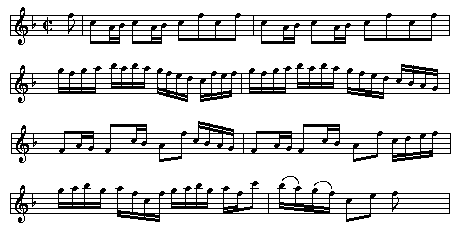| "Basic Elements of Music Motion" |
| Web Master Peter McCarthy BEM |
In the social dynamics of various World cultures, two general types of behavioral traits may be observed. First, a cultural type exists that is dominated by the forces of nature and the environment with the attendant culture having a reverence for nature. Second, a cultural type exists that dominates the forces of nature and the environment with the attendant culture having low regard for nature. Both cultural personality traits are influenced by religious, governmental and educational institutions within the respective cultures.
A music of any particular World culture tends to be reflective of the traits of the culture. If a culture is dominated by the forces of nature and the environment its music may enjoy a static quality. If a culture dominates the forces of nature and the environment its music may have aspects of action and energy about it.
Western society was shaped by the ideas and institutions of Europe, the Middle East, and Africa. All of these cultural forces merged in the West during the Renaissance (1450-1600). Western society is a goal-oriented society. Its languages, social institutions and artistic media reflect an image of controlled and purposeful motion. This "purposeful motion "created a dynamism seen clearly in the various historical styles of Western music and also found in many non-Western musics. Beginning with compositional styles that exist immediately before the Renaissance, Western music has been characterized as a music of "purposeful syntax" -- a music planned and designed to occupy space and time with controlled and goal-oriented sonic movement.
Notation
The music of many World cultures is notated (written on paper) in a music notation system so that the music may be performed again and again. Some musics are transferred from one generation to another by a rote tradition (memory). Styles of rote traditions in music tend to change very gradually over long periods of time. Today, many musics from rote tradition cultures have been converted into music notation systems by music scholars.
A music of any particular World culture tends to be reflective of the traits of the culture. If a culture is dominated by the forces of nature and the environment its music may enjoy a static quality. If a culture dominates the forces of nature and the environment its music may have aspects of action and energy about it.
Western society was shaped by the ideas and institutions of Europe, the Middle East, and Africa. All of these cultural forces merged in the West during the Renaissance (1450-1600). Western society is a goal-oriented society. Its languages, social institutions and artistic media reflect an image of controlled and purposeful motion. This "purposeful motion "created a dynamism seen clearly in the various historical styles of Western music and also found in many non-Western musics. Beginning with compositional styles that exist immediately before the Renaissance, Western music has been characterized as a music of "purposeful syntax" -- a music planned and designed to occupy space and time with controlled and goal-oriented sonic movement.
Notation
The music of many World cultures is notated (written on paper) in a music notation system so that the music may be performed again and again. Some musics are transferred from one generation to another by a rote tradition (memory). Styles of rote traditions in music tend to change very gradually over long periods of time. Today, many musics from rote tradition cultures have been converted into music notation systems by music scholars.

Enjoyment and understanding of most music is not dependent upon the ability to read and interpret written music notation. Reading music notation may lead to "deeper" areas of musical awareness; however, notational literacy in not a pre-requisite for an appreciation of any music


































